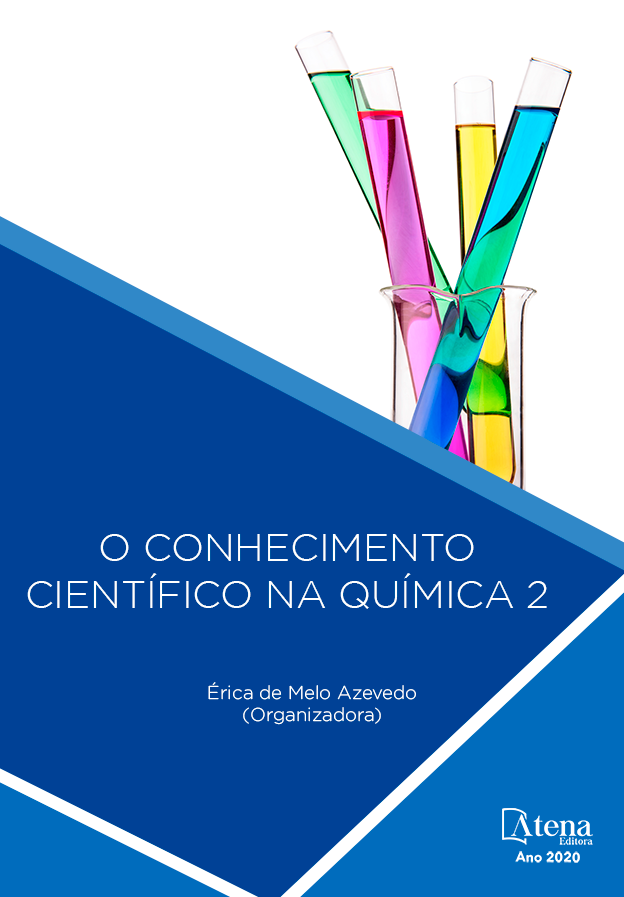
Níveis de cobre em amostras ambientais da região cacaueira no sul da Bahia por uso da microextração líquido-líquido dispersiva
Um novo método para extração e pré-concentração de íons Cu2+ em meio aquoso, usando microextração líquido-líquido dispersiva (DLLME) seguido de quantificação por espectrometria de absorção atômica com chama (FAAS) foi desenvolvido. A extração foi efetuada utilizando 5,0 mL de solução-amostra, 2-(2-tiazoliazo)-5-dimetilaminofenol (TAM) como agente complexante e uma mistura de tricloroetileno (solvente de extração) e metanol (solvente dispersor). As condições otimizadas para os demais parâmetros foram: pH (7,5); concentração do TAM (0,0036 mol L-1 ); volume do solvente dispersor (1,30 mL); volume do solvente extrator (50,0 µL). O método demonstrou ser simples, rápido, com baixo consumo de reagentes, e foi aplicado para determinação de cobre em amostras de águas (estuarina, mineral, subterrânea, de rio, e de abastecimento público) com concentrações variando de 1,77 a 8,14 µg L-1, e também aplicado em amostras de folhas de plantas frutíferas da mata Atlântica: cacau (Theobromacocoa), cupuaçu (Theobroma grandiflorum), jaca (Artocarpus beterophyllus Lam.), jambo (Syzygium jambos) e banana (Musa sp), com concentrações de 4,92 mg kg-1, 3,86 mg kg-1, 2,85 mg kg-1, 4,02 mg kg-1 e 6,79 mg kg-1, respectivamente.
Níveis de cobre em amostras ambientais da região cacaueira no sul da Bahia por uso da microextração líquido-líquido dispersiva
-
DOI: 10.22533/at.ed.63120201125
-
Palavras-chave: Cobre. Mata Atlântica. Região Cacaueira. Água. Folhas.
-
Keywords: Copper. Atlantic Forest. Cocoa Region. Water. Leaves.
-
Abstract:
A new method for extraction and pre-concentration of ions Cu2+ in aqueous medium using dispersive liquid-liquid microextraction (DLLME) followed by flame atomic absorption spectrometry (FAAS) quantification. The extraction was performed using 5.0 mL of sample solution, 2- (2-tiazoliazo) -5-dimethylamino phenol (TAM) as a complexing agent and a mixture of trichlorethylene (extractor solvent) and methanol (disperser solvent). The optimized conditions for the following parameters were: pH (7.5), concentration TAM (0.0036 mol L-1) disperser solvent volume (1.30 mL) and the extractor solvent (50.0 µL). The proposed method allows the determination of copper with a detection limit of 0.77 µg L-1 and quantitation limit of 2.57 µg L-1. The precision, calculated as relative standard deviation (n = 11), was of 7.1% and 6.9% for concentrations of 5.0 µg L-1 and 50.0 µg L-1, respectively. The enrichment factor and the consumption rate were 0.030 and 166.6 mL, respectively. The accuracy was verified through the analysis of the certified reference materials 1515 NIST-apple leaves and NIST 1573a-tomato leaves, and by addition/recovery of analyte in real water samples. The method is simple, fast, with low reagent consumption, and was applied for determination of copper in water samples (estuarine, mineral, groundwater, drinking, and tap water) with concentrations in the range from 1.77 to 8.14 µg L-1, and also applied in samples of leaves of fruitful plants from tropical forest: cocoa (Theobroma cocoa), cupuaçu (Theobroma grandiflorum), jackfruit (Artocarpus beterophyllus Lam), iamb (Syzygium jambos) and banana (Musa sp), with concentrations of 4.92 µg g-1, 3.86 µg g-1, 2.85 µg g-1, 4.02 µg g-1e 6.79 µg g-1, respectively.
-
Número de páginas: 13
- Mayara Costa dos Santos
- Ívero Pita de Sá
- Marina Santos de Jesus
- Julia Carneiro Romero
- Fábio Alan Carqueija Amorim000.136.545-27


